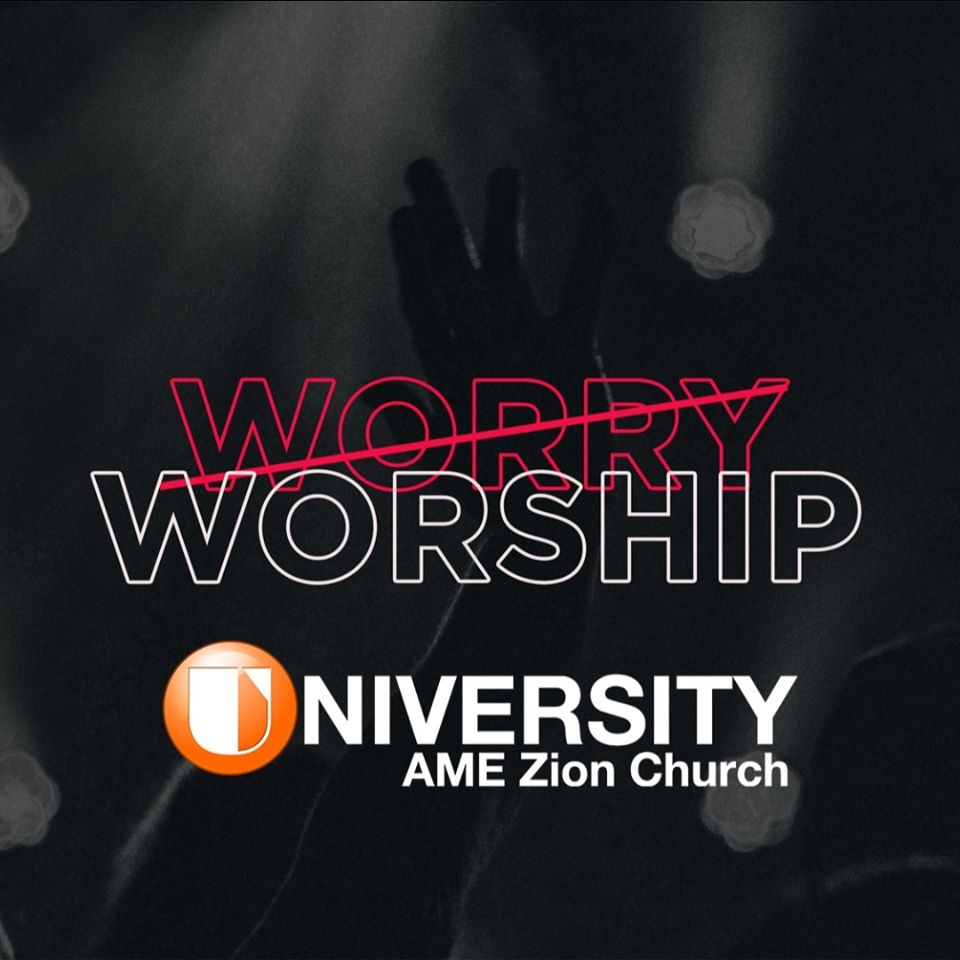Note from the Editor: It can be difficult to discern timely responses when so much shifts in just a week. Equipping yourself with resources is challenging when you not only must sort facts, probability, and panic, but you must also keep up to date with relevant developments. And so everyone from Old Navy to Christian denominations to the NBA is forced to rely on phrases like, “we are closely monitoring…” and “we have been in contact with” (which probably means an intern was on hold for 90 minutes) and “it is an evolving situation.” Yet there have been some beautiful responses from a variety of Wesleyan Methodist denominations to the spread of Coronavirus. Certainly many communities have been stepping up in a variety of ways; it is heartening to see. Christians certainly aren’t alone in that. Yet I have been moved repeatedly to see excellent resources and postures recommended and shared from a place of deep thoughtfulness, compassion, historical awareness, and humility. What was intended to be one post has grown into two: one focusing on Coronavirus communication tips and another reflecting on intentional posture and spiritual formation in the midst of outbreak disruption and upheaval. I hope these voices expressing Coronavirus communication resourcing for Wesleyan Methodist congregations will encourage, guide, and inspire. – Elizabeth Glass Turner
Every denominational connection and individual congregation is assessing how to engage with emerging needs during a crisis, without worsening difficult circumstances or contributing to virus spread. Depending on the local context, that will look different from town to town, city to city, where dynamics differ. Naturally, resources for pragmatic service will continue to be driven along existing lines – relationships with food banks, local schools, senior citizen centers, ministerial associations, and chaplains in hospitals, public service agencies, incarceration facilities, and so on. (If your congregation would benefit from a Coronavirus-specific disaster preparedness plan, see this resource from the Wheaton College Humanitarian Disaster Institute – with an eye for highlighting a few of the most relevant/pressing sections.)
Given that local relationships will drive much of the local response, the following examples help address a couple of immediate needs faced by clergy and congregational members: church Coronavirus communication and communicating with vulnerable populations with proactive hospitality.
As we survey some great examples of communication under pressure, let’s keep in mind a United Methodist congregation in South Carolina has two confirmed cases who, along with the pastor, are currently self-quarantined: so pastors, develop a contingency plan in case you personally have to be physically isolated at some point.
Communicating Changes in Gathered Worship Routine:
A week ago, Rev. Eric Huffman, Lead Pastor of The Story: Houston was one of the first clergypeople on my social media feed to announce substantive changes to Sunday gathering practices. Just a few days before, the first confirmed case of Coronavirus had popped up in the high-density population area of Houston. Though some state governments are requesting limitations on public gatherings to fewer than 250 or 100 people, others haven’t yet; this puts congregations in a tricky situation. Do you keep the doors open or not? For churches in regions where public gathering hasn’t been addressed officially, The Story: Houston church made some sensible changes and communicated them clearly:
Five ways COVID-19 will affect tomorrow’s events:
We’re still gathering as scheduled – 8:45, 9:45, 11:05 in the morning. Things will mostly be the same as usual, with some exceptions:
1. Hugging is not allowed. Not even side hugs. If you attempt to hug someone, one of our several Krav Maga Houston specialists will respond accordingly.
2. We will not share Communion tomorrow. There will be a way to share Communion safely in the future, but until all our volunteers are up to speed on new processes, we’re not going to risk it.
3. OFFERING-FREE WORSHIP TOMORROW!! Kinda. Not really. Instead of passing the baskets, we’ll encourage you to use the wall boxes to make your offerings!
4. Hand sanitizer will be everywhere. We might even start baptizing with it.
5. We’ll worship Jesus. We’ll pray for those affected by Coronavirus, for those paralyzed by anxiety, and for those who are working to treat the ill and to develop vaccines.
If you’re sick, stay home! If you’re well but anxious, join us online at 11:05! If you’re well and you want to join us in person, I’ll see you tomorrow!
Announcements like this balance humor with respect for the gravity of unintended consequences: no one goes to church planning on unwittingly exposing everyone to illness just by taking the offering plate when it’s passed and handing it to the person next to them. This points to another strength in this communication: contamination hubs have been identified, analyzed, and named so that those who attend know what to expect. Passing the peace, passing the offering plates, and passing Communion elements all put people in close contact or involve multiple people touching a shared item. In the conclusion, an alternate mode of participating – “join us online” – is mentioned so that people can be comfortable with whatever decision they make about attendance even if they’re not ill.
Some regions have moved beyond these precautions to banning large gatherings and others are likely to do so soon. In the meantime, it’s still valuable to identify practices prone to spreading contamination and then proactively communicating planned adaptations.
Communicating District or Conference-Wide Worship Cancellations:
On a different level of church Coronavirus communication and preparedness, yesterday morning (March 13) an episcopal communication helped shoulder the burden of congregational decision-making: Bishop Mike McKee of the North Texas Conference relayed news of prohibition of large gatherings in Dallas County, given the announcement of a state of emergency.
The Bishop requested that all churches in metropolitan districts, not just large ones, cancel services for the next two Sundays at least and asked that rural district congregations choosing to gather provide additional sanitizing resources. He further requested that all church members in the conference over 60 or with vulnerable health conditions stay home and join worship virtually online, linking to a document providing a list of congregations offering livestream. (Since yesterday, I’ve learned of other Bishops requesting services to be cancelled.)
Bishop McKee wrote, “In this moment, the way that we as people of faith can do the most good and do no harm actually is to refrain from coming together. Practicing social distancing can be a way for us to prevent further infections and literally save human lives. While worship services and other church gatherings are canceled, it will be even more important for pastors and lay leaders to be attentive to our older and more vulnerable members. The ramifications of this pandemic are more than about health. People are at risk of loneliness and of suffering economic impacts.
This unprecedented moment gives us the opportunity to witness to our faith in ways other than gathering for worship. Pray for healthcare workers, community leaders, those suffering from the virus and their loved ones, and those who are being negatively impacted by this pandemic. As individual disciples and as churches, keep your eyes open for emerging needs and find creative ways to meet them. Be a source of hope in your circles of influence.
You will hear from me again soon as this situation continues to unfold.”
We live in interesting times when Bishops request that people stay home from church, but it is extremely valuable when leaders pave the way for a sensible response. Through this announcement, the Bishop has taken responsibility for closures (because there is usually some resistance from at least a few church members when services are canceled, no matter the reason). In doing so, he has also given permission to earnest church-goers and conscientious pastors to stand down from stoically carrying out weekly worship.
This is a slightly different angle from which to approach faith-based Coronavirus communication: when leaders carefully gather and analyze information and proactively collaborate on a clear response, they can be ready to implement a plan when officials announce and enact a policy. (As someone who expresses criticism of the episcopacy from time to time, it is important to pause and express appreciation when I believe something has been done especially well. Thank you, Bishop, for taking leadership on this matter.)
For Bishops or General Superintendents or District Superintendents, implementing decisions at a district or conference-wide level can alleviate stress on their clergy and congregations. Additional statements from Methodist denominations with an episcopal form of church government include this one from the College of Bishops of the Christian Methodist Episcopal (CME) church and this one from the Board of Bishops of the AME Zion church (under Focal Point – statement on the Coronavirus).
At the time of publication, several queries have been made with pastors and leaders in a couple of Wesleyan Methodist denominations with congregationalist-style forms of church government. Responses indicate that communication from District Superintendents has been limited to encouraging clergy to follow any official protocols on public gatherings. (These queries were not exhaustive; in a “rapidly evolving situation,” it is probable we will see more statements in the days to come from district leaders in these denominations. Let’s hope that we do, for the sake of the decision load their clergymembers are carrying.) Official statements from denominational leadership teams include this one from The Wesleyan Church, these daily statements from the Board of General Superintendents of the Free Methodist Church, this one from the Board of General Superintendents of the Church of the Nazarene, and this one from the Church of the Nazarene on local church recommendations.
Communicating Virtual Worship Tips:
A lot has changed in just a week, and a large number of churches are livestreaming worship this weekend (even small congregations can put a phone on a tripod to livestream to their Facebook page: click here to watch a short simple video called “Local Church Guide to Using Facebook Live”). My own pastor emailed a worship guide file, with prayers, responses, texts, and sermon included so that it’s easier to follow along with the livestream.
Livestreaming is a good move in the current circumstances but in the past, watching a livestreamed service sometimes emphasizes the gap between presence and absence, simply because many worship leaders or pastors forget it’s happening and don’t address remote, virtual participants! For pastors preaching from empty sanctuaries or their living rooms, it will now be difficult to ignore the remote, virtual participants.
Enter this helpful reflection from University AME Zion in Palo Alto, California, where Rev. Kaloma Smith is Pastor. It’s a unique congregation that often practices fresh communication takes. Yesterday, the church shared these virtual worship tips: We know watching church service online can seem distant and impersonal, so we put together a list of tips to help you get the most out of this experience.
Here are simple tips to get more out of virtual worship:
MAKE IT COMMUNAL: As you get ready to watch a service on live stream, don’t do it alone. Invite those in your house to join in watching the worship service, invite friends and family to watch it even if they’re not in the same house, or start a watch party on Facebook.
GET IN THE RIGHT MINDSET: Say a prayer before you start watching, asking God to allow you to be brought to a place of worship, where you can experience his glory and presence.
REMOVE DISTRACTIONS: Treat this time as special and Holy. Stop scrolling, turn off the news, don’t multitask, let those around you know that this time is sacred, and you shouldn’t be disturbed. You will get so much more out of this experience if you focus and allow yourself to connect with the worship and God in a new way.
INTERACT WITH THE SERVICE: When you start watching, say hi in the chat and let people know where you’re from, type in your prayer request, respond to the praise team and preacher with emojis and gifs. We are a community, and we want to hear from you.
PARTICIPATE IN THE WORSHIP: Sing along with the music team, clap your hands, open your mouth in prayer and praise, write notes from the sermon. The service is not a show to be watched, but an experience that you are an essential part of.
SUPPORT OUR MINISTRY: During these difficult times as you’re watching University, we really need your financial support. You can give the following ways…
Not only was it savvy for this congregation to address what are often invisible or unspoken hurdles in joining worship online, it’s also a church that is already well poised to remove hurdles to giving when physical gathering is limited. The avenues to continue financial support included traditional snail-mail and a link to give through the website but most notably mentioned the “text to give” option. (In fact, Rev. Smith was quoted on the situation a few days ago in USA Today, here.)
Let’s name this as part of congregational Coronavirus communication: during uncertainty characterized by “panic shopping,” if you’re a part of a faith community whose budgetary decisions you support and trust, it’s important to continue whatever capacity of giving you’re able to exercise. Many faith communities will be front-line resources partnering with local efforts to protect and shield vulnerable church members and community members.
A quick note on utilizing technology for virtual worship: some church members may need guidance on how to find the church Facebook page. If congregations tap a few people to make quick phone calls on Sunday morning to assist any who struggle to navigate emerging technology, a quick, easy walk-through or step-by-step instructions before service begins could help everyone be prepared to participate. (For instance – in a time when many grandkids might help a grandparent navigate technology, some grandparents live in assisted communities that are now closed to visitors.) If those who are livestreaming begin the stream early with music, greetings, or announcements, it will help people know they’ve arrived at the right “place” virtually.
Communicating with Vulnerable Community Members:
After processing many ramifications of disruption likely to accompany the spread of illness, Jennifer Crispin shared pragmatic Coronavirus communication insight about living well individually through intentional community in ways that support and serve others. Her thoughts have been echoed by others who similarly spent the week thinking through the likely scope of impact:
“There are still ways you can continue to SHOW UP for people, even if you can’t show up in person:
*Donate cash to your local food shelter. A whole lot of people are about to get more food insecure, and cash donations go so much farther than canned goods. Plus, you’ve spent enough time at the grocery store already.
*Get take out from your local Chinese restaurant. You may not have seen people being racist in your community, but lots of these businesses are taking a hit.
*Call your friend with a chronic health condition that you probably don’t fully understand and say, “I am going to the grocery store, what can I bring you?”
*Write a letter or call your loved ones in retirement centers, assisted living, long term care. Many are or will soon be curtailing visitors, and these folks are socially isolated enough. Remind them they are loved.
These are all different forms of communication. Financial support of food banks, organizations, and local businesses communicates; contacting someone in a vulnerable health position communicates; contacting loved ones or church members or simply any residents who are shut-in or live in long-term care facilities – that communicates.
What do these actions communicate?
They communicate solidarity and community identity. They communicate welcome (through hospitable gestures), humility (through the willingness to serve), and value (through reinforcing the worth of those whose actions are limited in public and community space). A hospitable posture isn’t solely practiced in welcoming people to a center of activity, like a church building; a hospitable posture actually reaches out and engages people where they are. (Engaging people doesn’t have to be a physical action, exposing a body to added risk factors.) It may sound odd to say that communicating with people who are isolated is an act of hospitality, because we think of hospitality as hosting people in our space.
But what if we think of it this way?
When I call aging adults in my family, faith community, or extended community – when I speak to them over the phone, which may be their default communication style more than it is mine – I am saying, “you belong here, you are welcome here, you are a gift here. You are not forgotten or irrelevant. You belong; you belong; you belong.“
When I donate cash to a food bank or to my faith community’s emergency fund – when I give to a stressed organization with stressed volunteers or employees who are working long hours on policies that inevitably will be criticized by some – I am saying to the organization, to the ministry, and to each person depending on it, “you belong here, you are welcome here, you are a gift here. You are not taken for granted or at fault. You belong; you belong; you belong.”
When I contact friends who have a kid who’s immunocompromised or text someone going through chemo – when I tell them what I’m praying for them, and ask them to tell me something to do on their behalf – I am saying, “you belong here, you are welcome here, you are a gift here. You are not a liability or hassle. You belong; you belong; you belong.”
When I order take-out from a restaurant owned and staffed by immigrants – when I show up or delivery arrives and I smile and make eye contact and say thank you – I am saying, “you belong here, you are welcome here, you are a gift here. You are not alone or unwanted. You belong; you belong; you belong.”
Many of these dynamics – church communication, what it means to extend hospitality – aren’t new to our sisters and brothers in the faith who live in different parts of the world. It seems appropriate to acknowledge and repent of times when, in our distraction or self-centered routine, we displayed casual disinterest when other regions have been rocked by outbreaks, sometimes of illnesses much more devastating than the Coronavirus.
Mother Teresa shared a great deal of wisdom on many occasions. Several of her insights are timely right now; one in particular comes to mind as we consider how we communicate and what we are communicating.
“If we have no peace, it is because we have forgotten that we belong to each other.”













